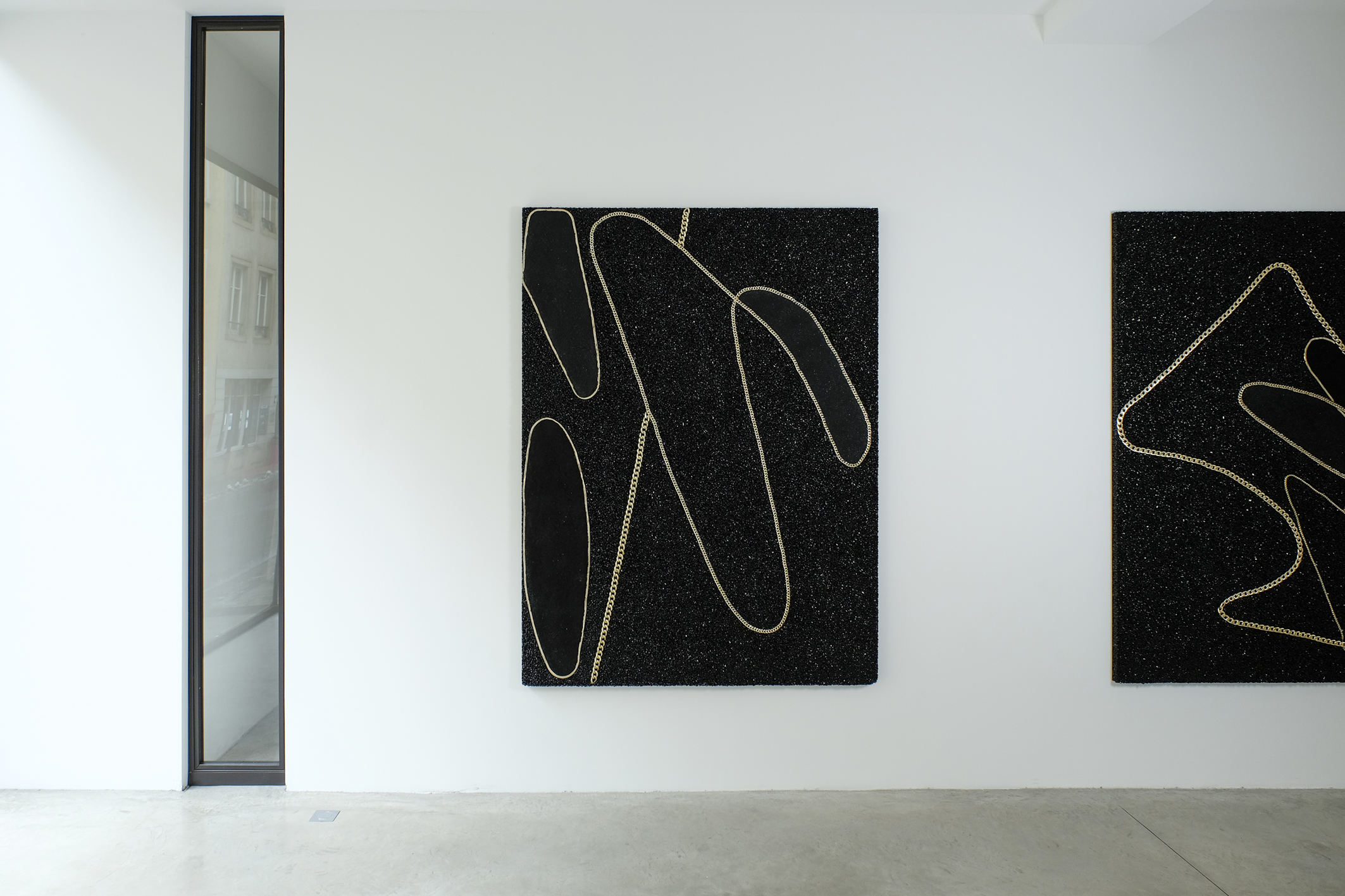
Zidoun-Bossuyt Gallery is pleased to announce Luis Gispert’s second exhibition at the gallery. The artist will present a series of two-dimensional works, each comprised of quasi-asphalt slabs embedded with varied strands of gold and silver chain.
Preview on Thursday January 14, 2016 from 6pm in presence of the artist
Exhibition January 15 – February 27, 2016
PRESS RELEASE
Luis Gispert orchestrates generative collisions between elements of divergent visual languages. In his previous bodies of work, he sampled imagery from Latino youth culture, hip-hop, Madison Avenue mood boards, and museum collections, creating worlds that seem more haunting, fierce, or absurd than their component parts. His latest body of work continues to engage with the art-historical and pop-cultural concerns that have long motivated his practice, but here the visual language carries a Minimalist sensibility. The images of fake nails, stereos, brand logos, and automobile interiors that populated his earlier work have given way to simple visual building blocks: asphalt and gold chain.
To create these works (which occupy a zone between painting, sculpture, print, and stele), Gispert invented a new process that involves troweling emulsified bitumen into a frame and then embedding segments of gold chain into the mixture before it hardens. The resulting pieces are rife with allusions to art history: kaleidoscopic recombinations of specific forms found in works by Victor Brauner, Francis Picabia, and Henri Matisse, among others. In one sense, his decision to tie his new works so unequivocally to their respective points of reference ironically sets him free from making certain sets of compositional choices, creating instead an arena in which he can engage with his materials on a purely physical level. But Gispert’s art-historical references serve another function as well.
Several years ago, while describing his previous works’ subjects—the working-class individuals he photographed and filmed who put “inordinate amounts of resources into their cars and outfits”—Gispert once remarked: “They were living out some kind of fantasy. There was role-playing and posturing but there was something else too, below the surface.” His latest series, perhaps, manifests another adroit form of role-playing too—performed by the artist instead of his subjects. In these pieces, he seems to ask: What would it be like to sample from the visual vocabulary of modernist movements. In a recent conversation, Gispert cited a passage from Thomas Lawson’s 1981 essay “Last Exit: Painting,” in which Lawson talked about painting as “camouflage . . . a device of misrepresentation, a deconstructive tool designed to undermine the certainty of appearances.” Perhaps Gispert’s adaptation of modernist visual vocabularies constitutes his own form of role playing and disguise—an undermining of the certainty of appearances, to use Lawson’s words.
But if fantasy, role-playing, and protean imaginings of possibility underscore his recent work, so too do their opposites: enduring specificity and concreteness. The lines of these paintings are set in stone. (As such, Gispert’s green-screen backdrops in his earlier photographs become an apt foil to his recent asphalt grounds. Where the former serve as stand-ins and proxies for possible, fictive worlds, the backgrounds of these new pieces, by contrast, are immutable fields.) And insofar as Gispert’s rock-and-chain compositions reference canonical works on canvas, but while employing materials we imagine lasting for decades, they draw power from tensions between the unfettered ephemerality of everyday human narratives and the durability of stone. Think of gold grilles on teeth; of golems and their masters; of the bodies preserved in Pompeii’s volcanic rock alongside keys, jewelry, and coins. In a 2008 book titled The Earth after Us, Jan Zalasiewicz wrote of an “urban stratum”: the most recent layers of crust and detritus that inscribe the marks of humanity’s lives in the geological record. Gispert’s recent work finds beauty in the marks we all leave in that stratum. If his compositions themselves call to mind old European models of auteurship, his materials conjure the more communal, open-ended process by which our daily activities are recorded, however anonymously, in the images of our surrounding landscapes. Who among us has never seen a blacktop mottled with chewed gum; or a cement block impressed with finger-drawn ridges of two sets of initials and a heart; or the calligraphic flourishes of a utility worker’s spray-painted codes on concrete, demarcating a subterranean network of pipes and wires?
Gispert’s chains aren’t just references to the traditional line drawings and paintings that hang in frames on museums’ walls. They also evoke more populist dreams of luxury, and the skid marks, graffiti, gum, shoeprints, and other democratic, aggregative forms of mark-making that populate our shared spaces. Which means that, even though his latest body of work is created via an entirely new process, it still shares areas of common ground with his earlier, more overtly pop-cultural art: Both then and now, Gispert has captured the emergence of visual vocabularies that are more complex and resonant than the sum of their juxtaposed sources would otherwise suggest.
By Dawn Chan
New York, 2016

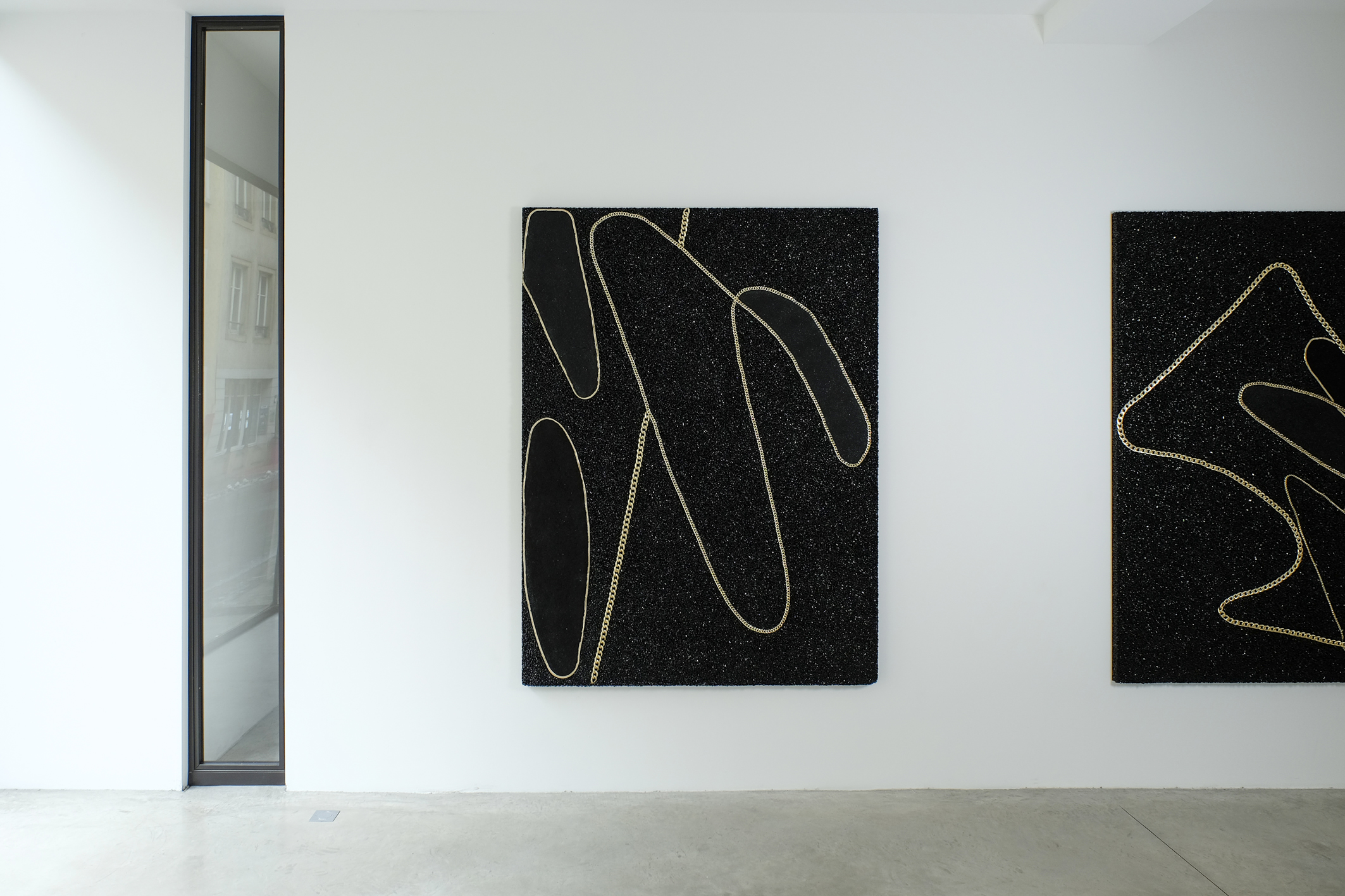
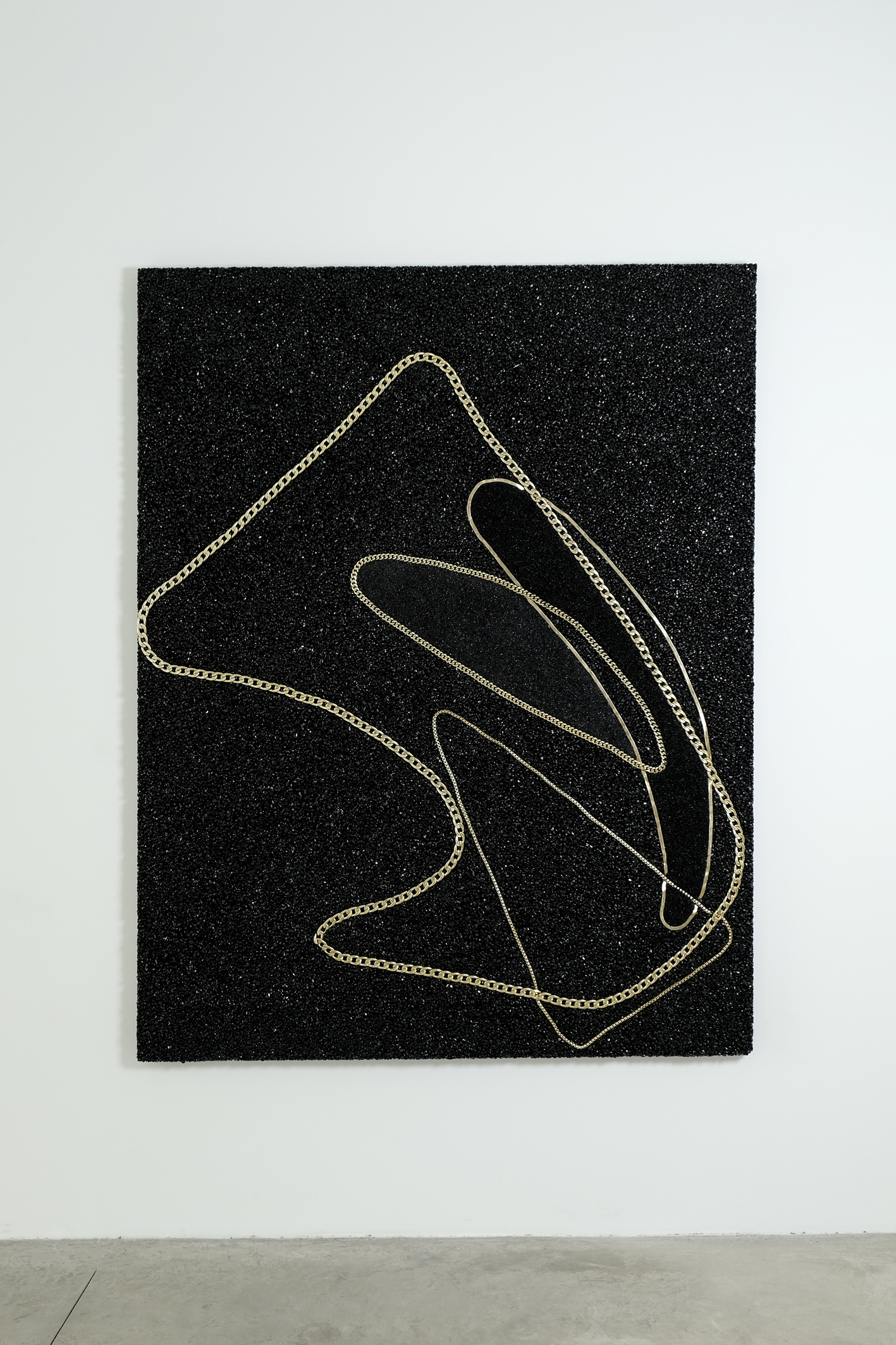
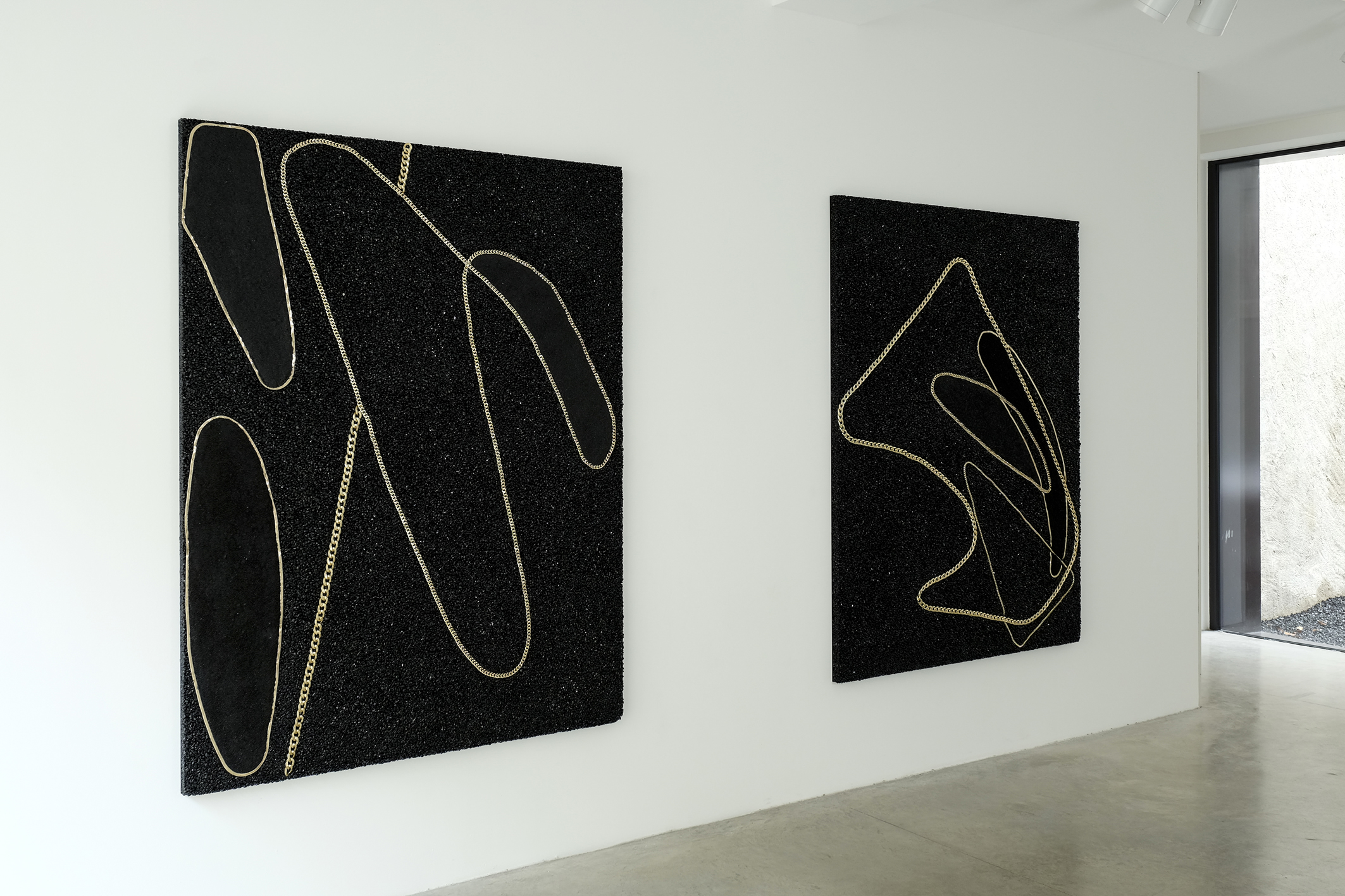
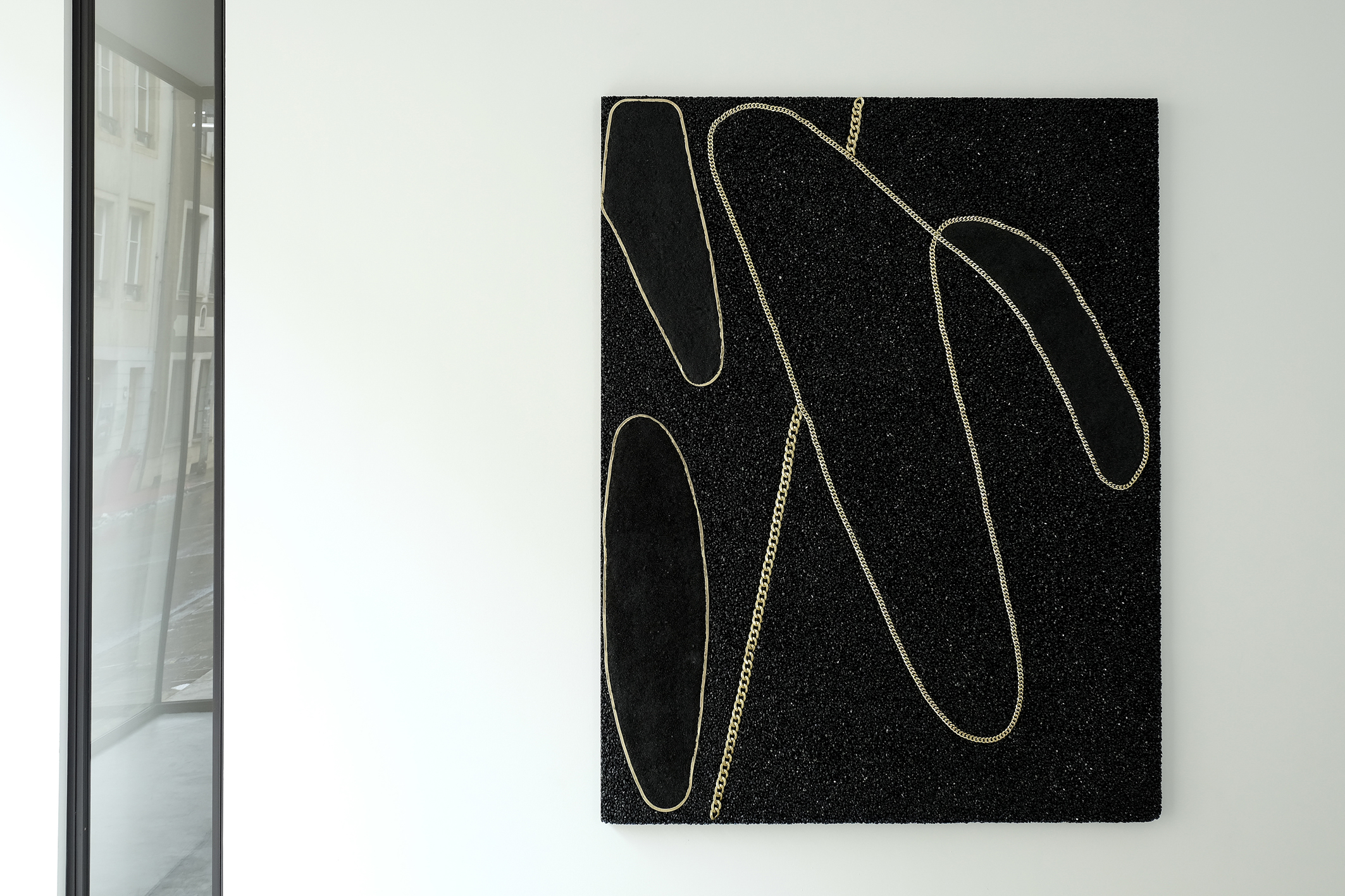
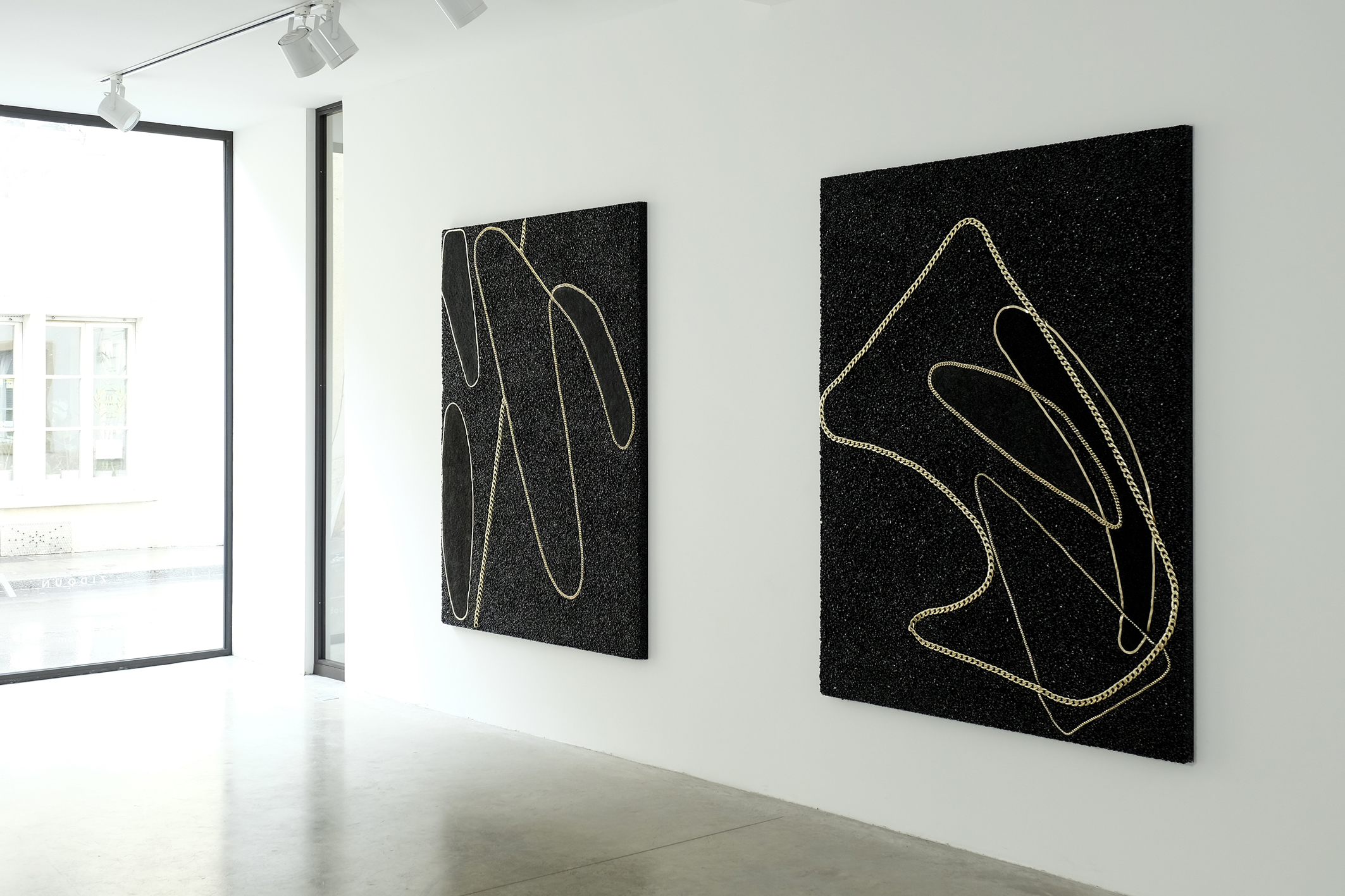
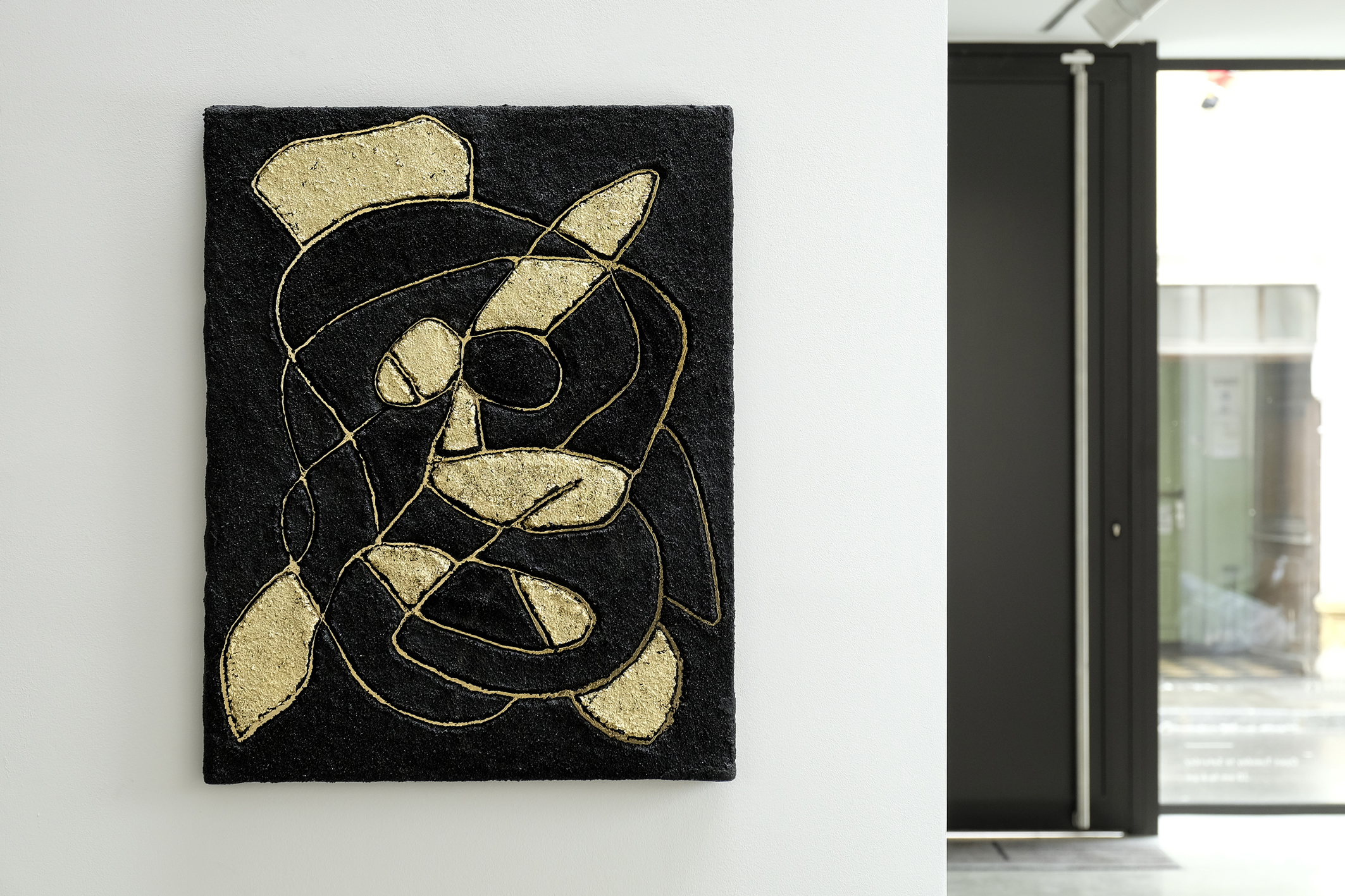
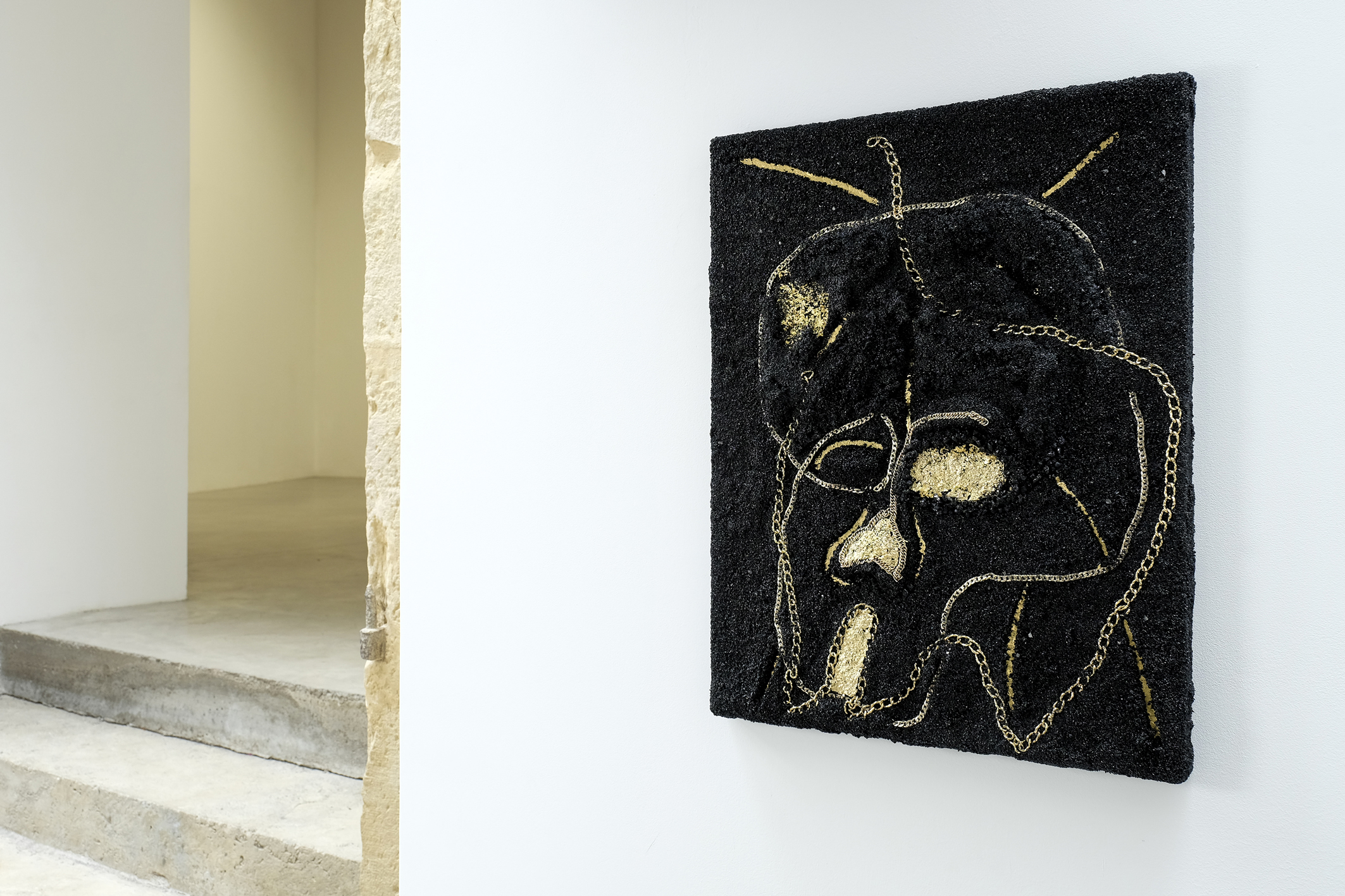


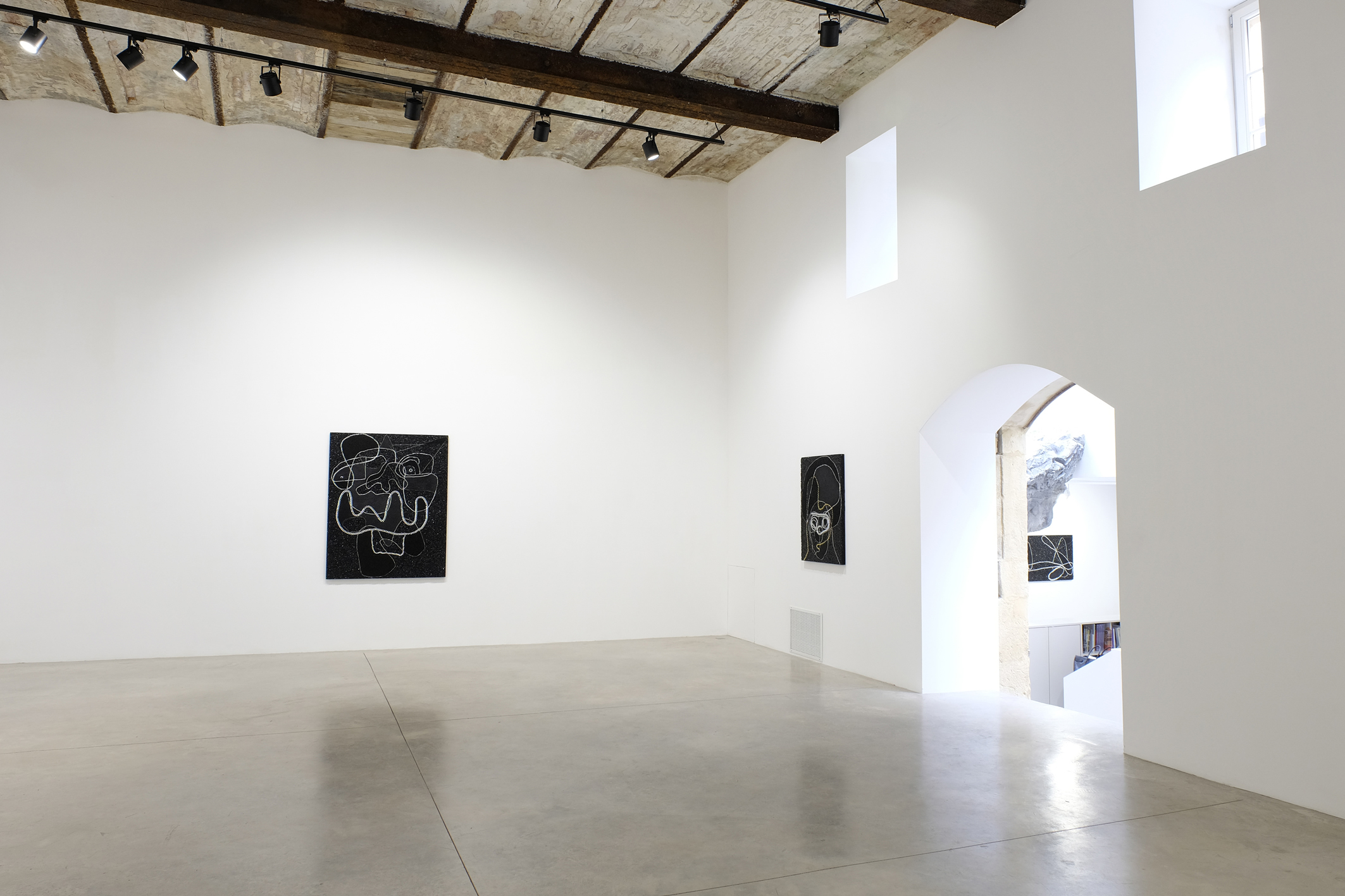
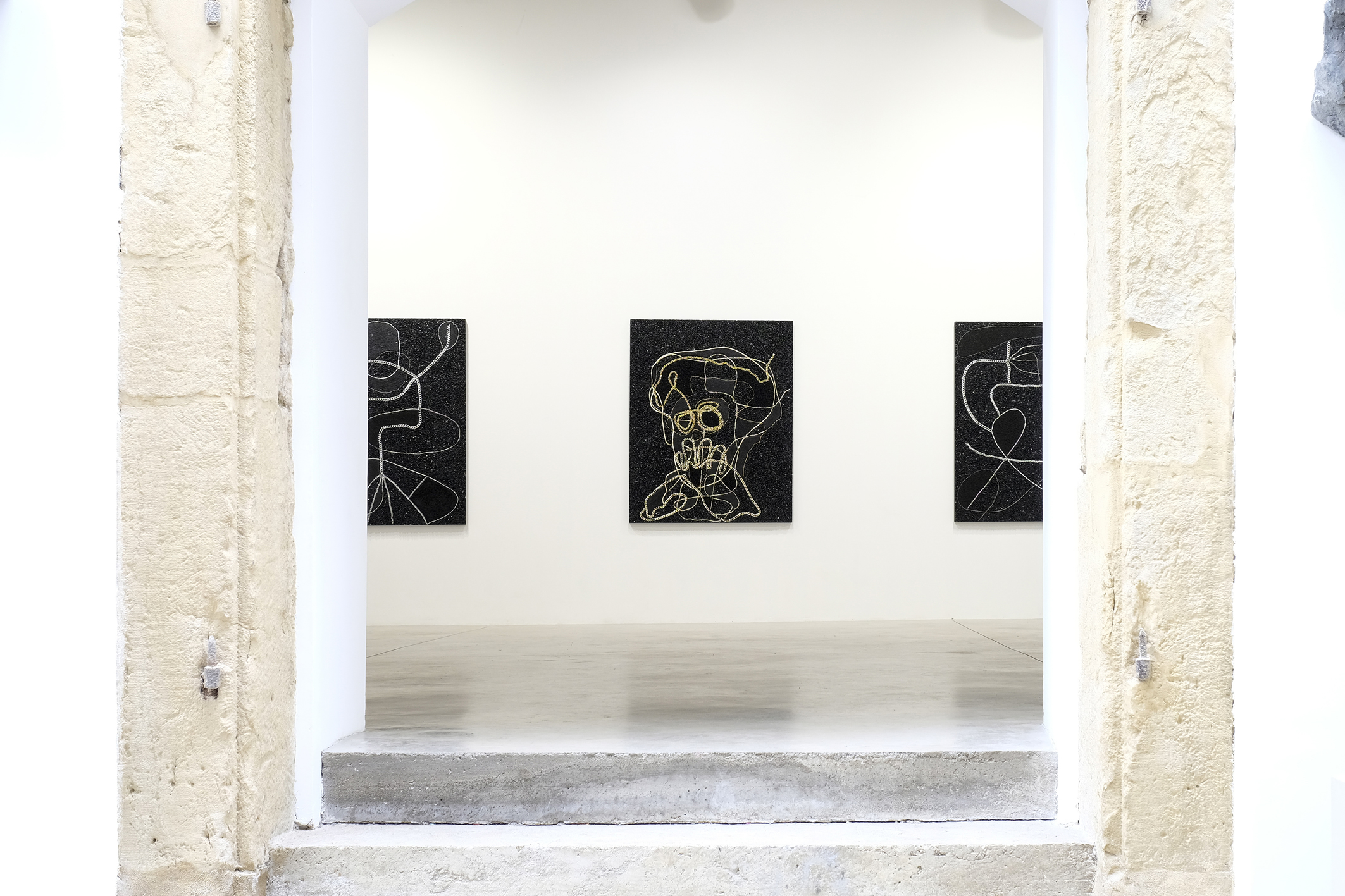

 UP
UP